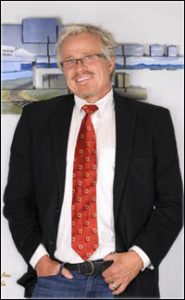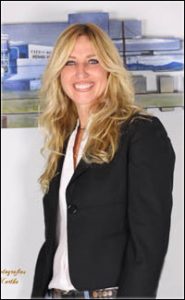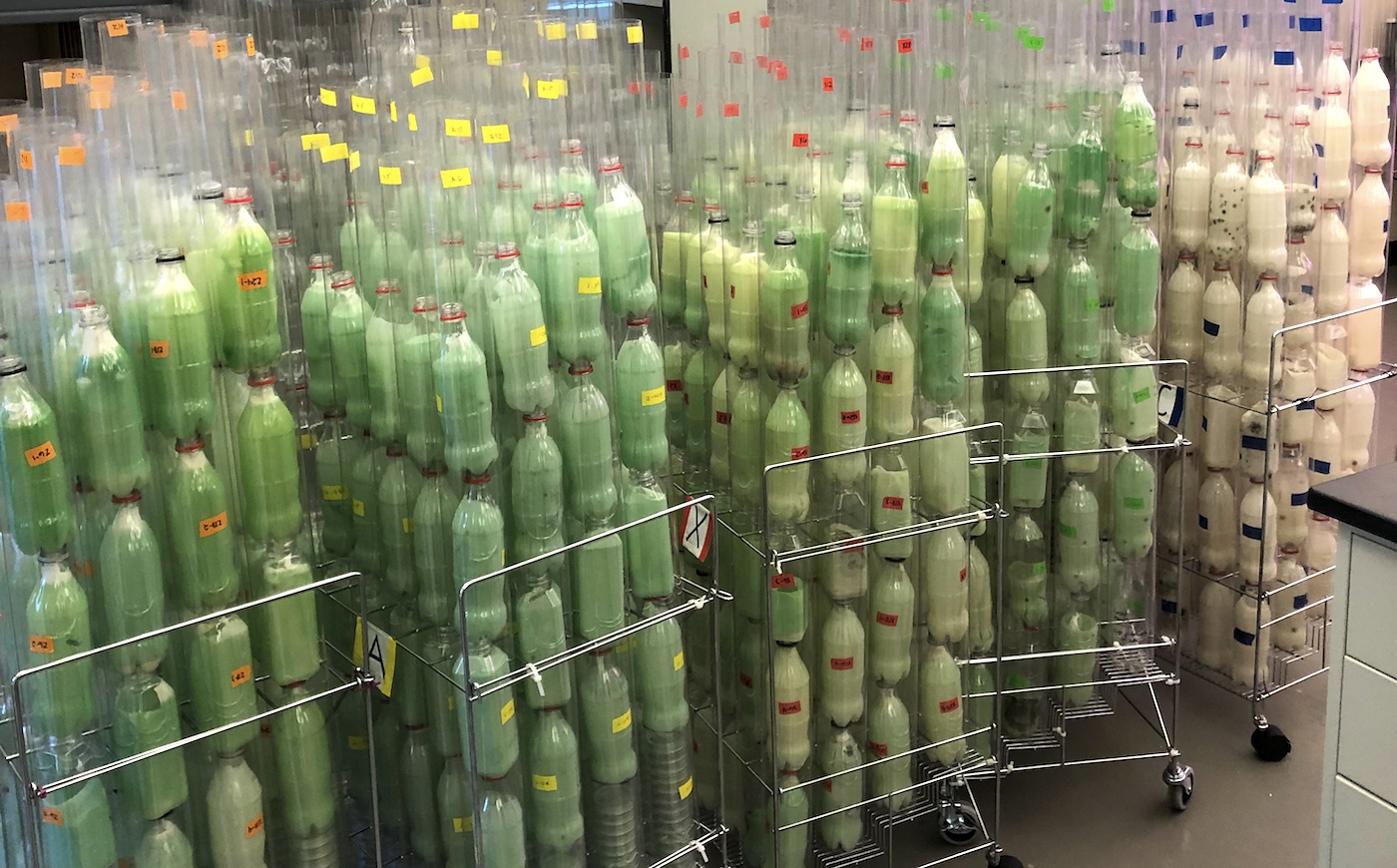
Atmospheric farming—using photosynthesis to turn carbon into cellulose for products—could be the next step for Reactive Surfaces, a company that specializes in adding unique biology to coatings and sealants.
For a number of years now, Reactive Surfaces has been able to do something very interesting with coatings, including the paint you apply to a wall, the sealant on a countertop or even the caulk between tiles.
By adding enzymes and other bio-molecular additives to polymer coatings, Reactive Surfaces can create solutions that seem a little like science fiction: self-cleaning grout and surfaces that de-grease themselves, for instance.
“We started Reactive Surfaces in about 2002; what we do is reach into nature and capture the functionality we’d like to have in a coating, like self-cleaning,” said Steve McDaniel, who co-founded Reactive Surfaces with his wife, Beth McDaniel, president of the company. “We wondered if coatings could mimic the functionality found in nature long-term. We didn’t know if it would work at first; we now know it works well.”

McDaniel, who has a Ph.D. in biochemistry and molecular biology, is the company’s chief innovator; he’s been able to work with polymer chemists to mix and match microbiology and coatings for a variety of applications.
Along with self-cleaning coatings, others can take toxins out of the air. For military applications, a special coating on equipment, weapons and electronics can help neutralize nerve agents.
The most recent challenge that Reactive Surfaces decided to take on was what McDaniel called the “moon shot.” After reading reports in October 2018 that stressed the increase in greenhouse gases in the atmosphere, McDaniel wondered if living cells could be added to coatings, where they could perform photosynthesis, thus pulling carbon out of the atmosphere and turning it into cellulose for products. He calls it “atmospheric farming.”
“We gave ourselves three months to get it done; we didn’t hit that, but it showed promise, so we gave it three more months,” he said. “This last June, we had done it–photosynthetic algae in Coatings that fix carbon and produce cellulose.”
The micro-crystalline cellulose produced by the algae entrapped within the coating, according to McDaniel, is itself a byproduct that can be used to create other products much as another abundant cellulose in Mississippi–tree pulp–is used in all sorts of products and applications.
McDaniel–who lives in Austin, Tex., gives a lot of credit to Innovate Mississippi and the University of Southern Mississippi, where their laboratories have been for over 10 years, for the success they’ve enjoyed in their quest to use rugged biological additives to chemical coatings.
“We actually started at North Dakota State, then moved to a university in Florida. We were looking for a home. Although those places were OK, when we finally found the University of Southern Mississippi, it’s so pro-business… they came in right away and started helping us,” McDaniel said. As a long-term tenant at USM’s Accelerator, the symbiotic relationship and USM’s focus on polymers has been a huge win for the company, according to McDaniel. “We’re not leaving Mississippi to go back to Texas, because this doesn’t exist in Texas.”
McDaniel notes that Innovate Mississippi has been a strong partner and champion of Reactive Surfaces, both through “constant interaction” and via the Mississippi Seed Fund, which loaned Reactive Surfaces money to explore the possibilities with anti-microbial additives to coatings. He said Innovate has done an amazing job of connecting them with other entrepreneurs in the state, and helping them raise their profile through events and funding.
The next step for Reactive Surfaces is a big one–bringing atmospheric farming to commercial reality.
“We can take the 37.1 gigatons of excess carbon dioxide pumped into the atmosphere each year, pull it back out of the atmosphere and turn it into products that we can use,” McDaniel said. “This is not rocket science exactly; it’s high-tech agriculture; high-tech farming.”
And if it proves commercially viable, atmospheric farming could be a high-tech solution that changes the way the world approaches carbon in the atmosphere–which could be a huge win for both Reactive Surfaces and the state of Mississippi.
RELATED STORIES:

